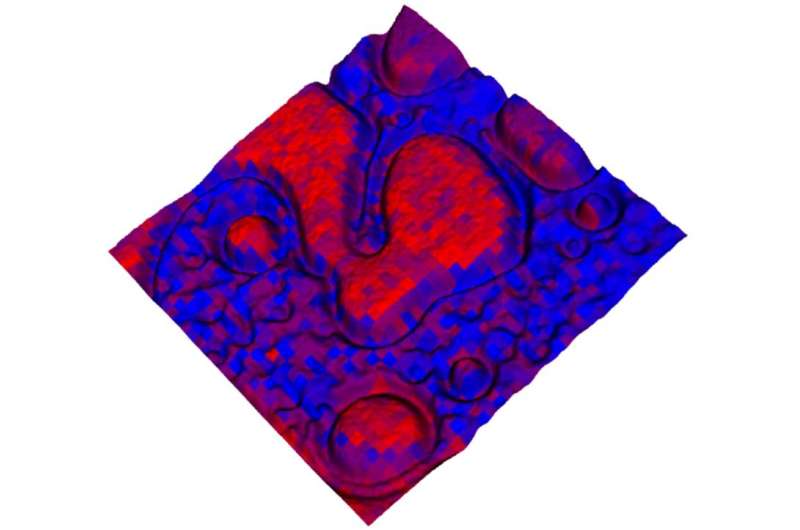New ORNL device combines power of mass spectrometry, microscopy

A tool that provides world-class microscopy and spatially resolved chemical analysis shows considerable promise for advancing a number of areas of study, including chemical science, pharmaceutical development and disease progression.
The hybrid optical microscope/mass spectrometry-based imaging system developed at the Department of Energy's Oak Ridge National Laboratory operates under ambient conditions and requires no pretreatment of samples to analyze chemical compounds with sub-micron resolution. One micron is equal to about 1/100th the width of a human hair. Results of the work by postdoctoral associate Jack Cahill and Gary Van Berkel and Vilmos Kertesz of ORNL's Chemical Sciences Division are detailed in Analytical Chemistry.
"Knowing the chemical basis of material interactions that take place at interfaces is vital for designing and advancing new functional materials that are important for DOE missions such as organic photovoltaics for solar energy," Van Berkel said. "In addition, the new tool can be used to better understand the chemical basis of important biological processes such as drug transport, disease progression and response for treatment."
The hybrid instrument transfers tiny amounts of a material such as human tissue or an organic polymer from a sample by a laser ablation process in which material is captured and transported via liquid stream to the ionization source of the mass spectrometer. In just seconds, a computer screen displays the results.
Researchers noted that the resolution of less than one micron is essential to accurately differentiate and distinguish between polymers and sub-components of similar-sized cells.
"Today's mass spectrometry imaging techniques are not yet up to the task of reliably acquiring molecular information on a wide range of compound types," Cahill said. "Examples include synthetic polymers used in various functional materials like light harvesting and emitting devices or biopolymers like cellulose in plants or proteins in animal tissue."
This technology, however, provides the long-sought detailed chemical analysis through a simple interface between a hybrid optical microscope and an electrospray ionization system for mass spectrometry.
More information: John F. Cahill et al. Characterization and Application of a Hybrid Optical Microscopy/Laser Ablation Liquid Vortex Capture/Electrospray Ionization System for Mass Spectrometry Imaging with Sub-micrometer Spatial Resolution, Analytical Chemistry (2015). DOI: 10.1021/acs.analchem.5b03293
Journal information: Analytical Chemistry
Provided by Oak Ridge National Laboratory




















